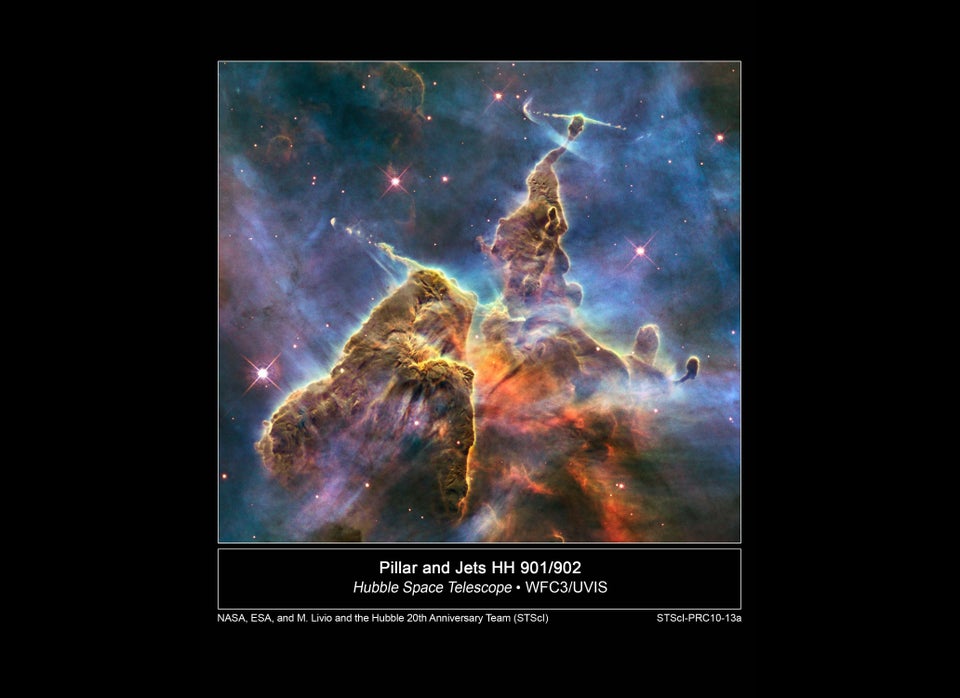Space scientists have solved a cosmic mystery that had stumped them for the past 40 years. Using images taken by NASA's Hubble Space Telescope, astronomers from the agency have found the source of the Magellanic Stream, a trail of gas that stretches almost halfway across the Milky Way.
Since the Magellanic Stream was first discovered in 1970, astronomers have been unable to determine the origin of the gaseous formation. They hypothesized that it stems from the Large or Small Magellanic Clouds, two satellite galaxies that orbit the Milky Way. Yet they were unable to confirm whether the stream originated from one or both of the galaxies -- or another source altogether.
Now Hubble's Cosmic Origins Spectrograph has finally settled the issue: The stream originated primarily from the Small Magellanic Cloud about 2 billion years ago, but a second region of the trail includes material from the larger cloud that appears to have arisen more recently.
(Story continues below.)
Source: Hubblesite.org
The combined radio and visible-light image (top) shows the Magellanic Stream in pink. The image below, taken at radio wavelengths, shows a close-up map of the stream. (Top: David L. Nidever et al., NRAO/AUI/NSF and A. Mellinger, LAB Survey, Parkes Observatory, Westerbork Observatory, and Arecibo Observatory; Bottom: LAB Survey)
Led by Andrew J. Fox of the Space Telescope Science Institute, the team surveyed the amount of heavy elements at six points along the Magellanic Stream by observing how the materials absorb ultraviolet light, according to a statement released by NASA. The researchers then compared the stream's primary elements -- oxygen and sulfur -- with the levels of those found in the Magellanic Clouds about 2 billion years ago, when the gaseous trail is believed to have formed.
The readings indicate that the elements in the stream better matched the measurements from the Small Magellanic Cloud. But the team also noted that another region of the stream appears to derive from the Large Magellanic Cloud.
"We're finding a consistent amount of heavy elements in the stream until we get very close to the Magellanic Clouds, and then the heavy element levels go up," Fox said in a statement. "This inner region is very similar in composition to the Large Magellanic Cloud, suggesting it was ripped out of that galaxy more recently."
The Magellanic Clouds were named for Portuguese explorer Ferdinand Magellan after his crew spotted them during the first voyage around the globe. At about 160,000 light-years from Earth, the Large Magellanic Cloud is one of the closest satellite galaxies, while the Small Magellanic Cloud is slightly farther out at 200,000 light-years from earth.
